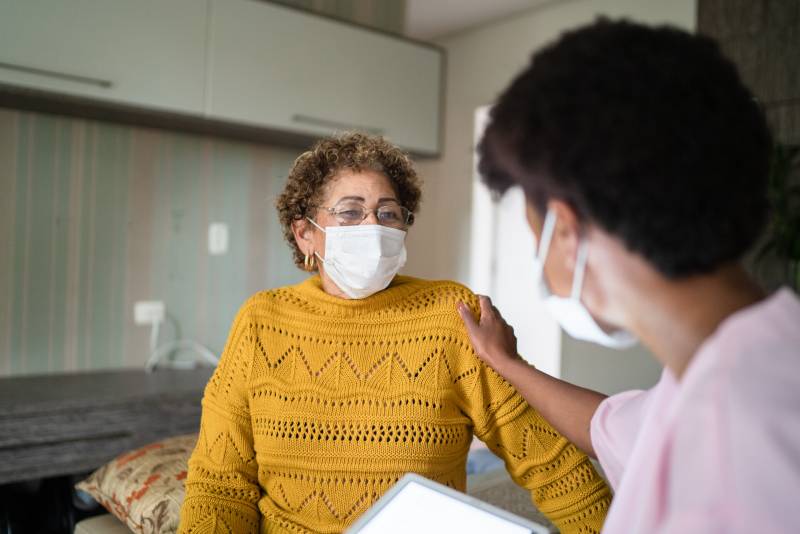As of today, California no longer requires face masks to be worn in health care facilities and other high-risk settings.
Since 2020, the state has required everyone to wear masks in places like hospitals, clinics, correctional facilities and centers for people experiencing homelessness. Even as public health officials removed other COVID-19 restrictions, this rule remained in place through the multiple surges and drops in cases California saw in the past three years.
Additionally, health care workers are no longer required to get the COVID-19 vaccine. This change includes direct care workers and those who work in adult care facilities, as well as in correctional and detention centers.
- Jump straight to your county’s new masking rules: Alameda | San Francisco | Contra Costa | Marin | Napa | San Mateo | Santa Clara | Sonoma | Solano
Despite calls from physicians and disability advocates to keep these rules in place to protect people especially vulnerable to COVID-19, state officials say that California is in a strong enough position to loosen these restrictions.
“Our communities did a lot of the hard work by getting vaccinated and boosted, staying home and testing when sick, requesting treatments when positive, and masking to slow the spread,” said Dr. Tomás Aragón, the state’s public health officer, in a press release on March 3 announcing the change.
However, individual counties retain the authority to enforce their own additional public health restrictions separate from the state’s. So if your county has a mask mandate that’s more restrictive than state rules, that’s the one you have to follow. Some Bay Area counties, like Contra Costa and Alameda, will continue to require face masks in certain high-risk settings, like nursing facilities, after April 3.
Keep reading to find the mask rules for high-risk settings in the county you live, work or study in.
Alameda
All staff working in Alameda County’s 66 skilled nursing facilities are still required to wear face masks, even after April 3. County health officials released a statement last week clarifying that this order will only apply to staff and that visitors will only be encouraged to wear masks.
“Alameda County is moving cautiously with our skilled nursing facilities because they serve a large and highly vulnerable population of generally older adults with complex medical conditions,” said Alameda County Health Officer Dr. Nicholas Moss in a March 27 statement.
The order applies only to those working at nursing facilities and will be reviewed monthly by county health officials. The county will align with state masking rules for all other settings.
Contra Costa
All staff in the county’s nursing facilities will still be required to wear face masks, even after April 3. According to a press release from Contra Costa health officials, wearing a mask will be required for employees working directly with patients, and also for paramedics, emergency medical technicians, contractors and vendors when they enter these facilities.
“When the state announced the change in their rules, we began to think, ‘Does it make sense to continue masking anywhere?'” Dr. Ori Tzvieli, the county’s health officer, told KQED. “We decided that one of the highest-risk settings was skilled nursing facilities … these nursing homes basically have some of the higher-risk patients. They have older patients. They have patients with medical co-morbidities.”
Visitors, however, will not be required to wear masks when inside these facilities. Patients also are not required to wear masks. The county will review its masking policy on a monthly basis.
Napa
Napa County does not require the use of face masks in high-risk settings. County officials told KQED that masks will continue to be made available for residents and staff in these places, clarifying that “masking is strongly recommended in high-risk settings” when community transmission rates are high.
San Francisco
The San Francisco Department of Public Health told KQED that those working in health care, which includes skilled nursing facilities and jail settings, are still “required to wear a well-fitted mask when they are working in the same room as patients, clients, residents or people who are incarcerated.”
However, everyone else, which can include patients, clients, residents or people who are incarcerated and their visitors, are only encouraged to wear a mask when inside these settings. Individual facilities do, however, have the authority to implement more restrictive guidelines.
Marin
Marin County does not require the use of face masks in high-risk settings. County officials told KQED that health care facilities can enforce their own mask rules individually.

